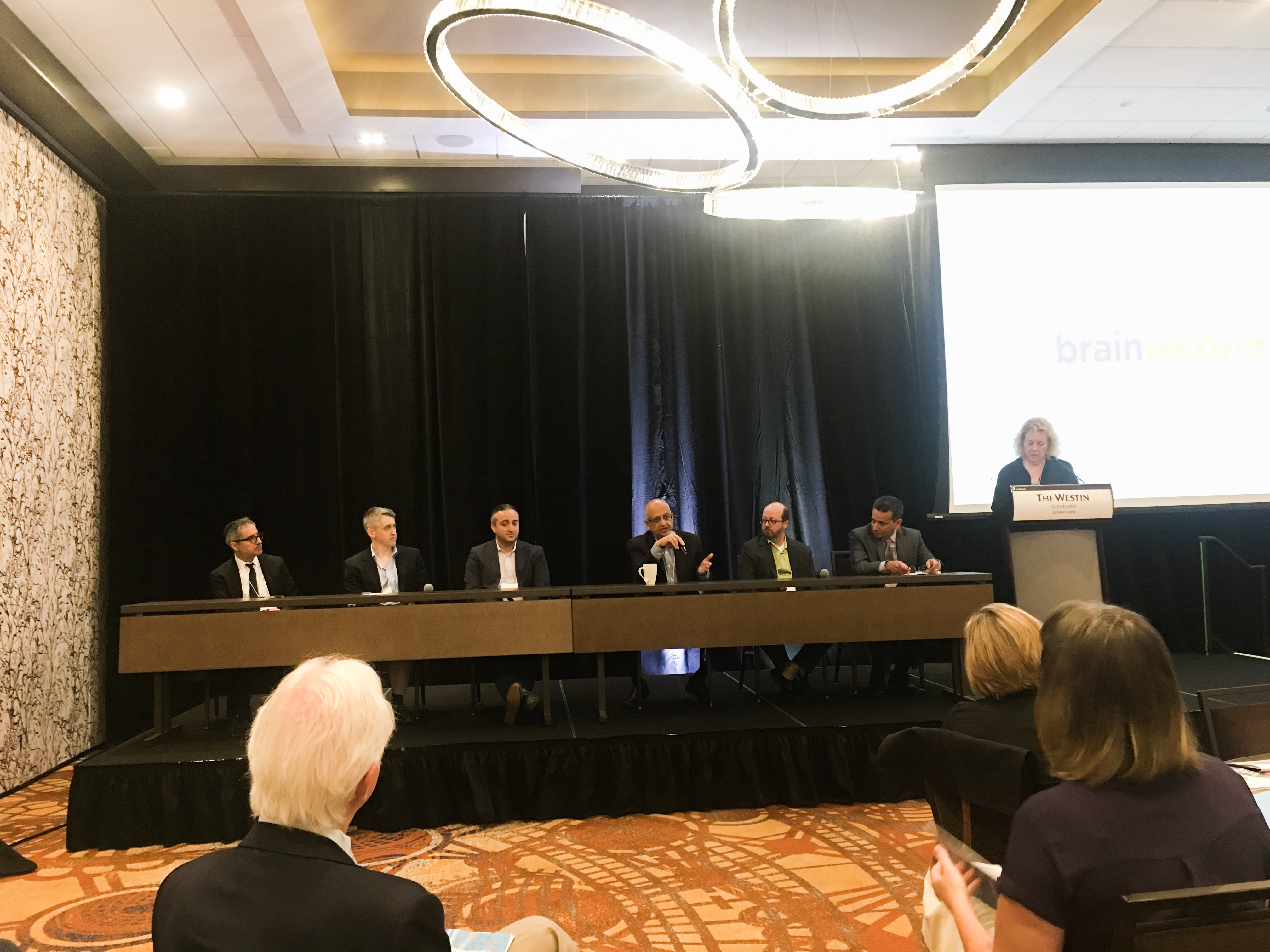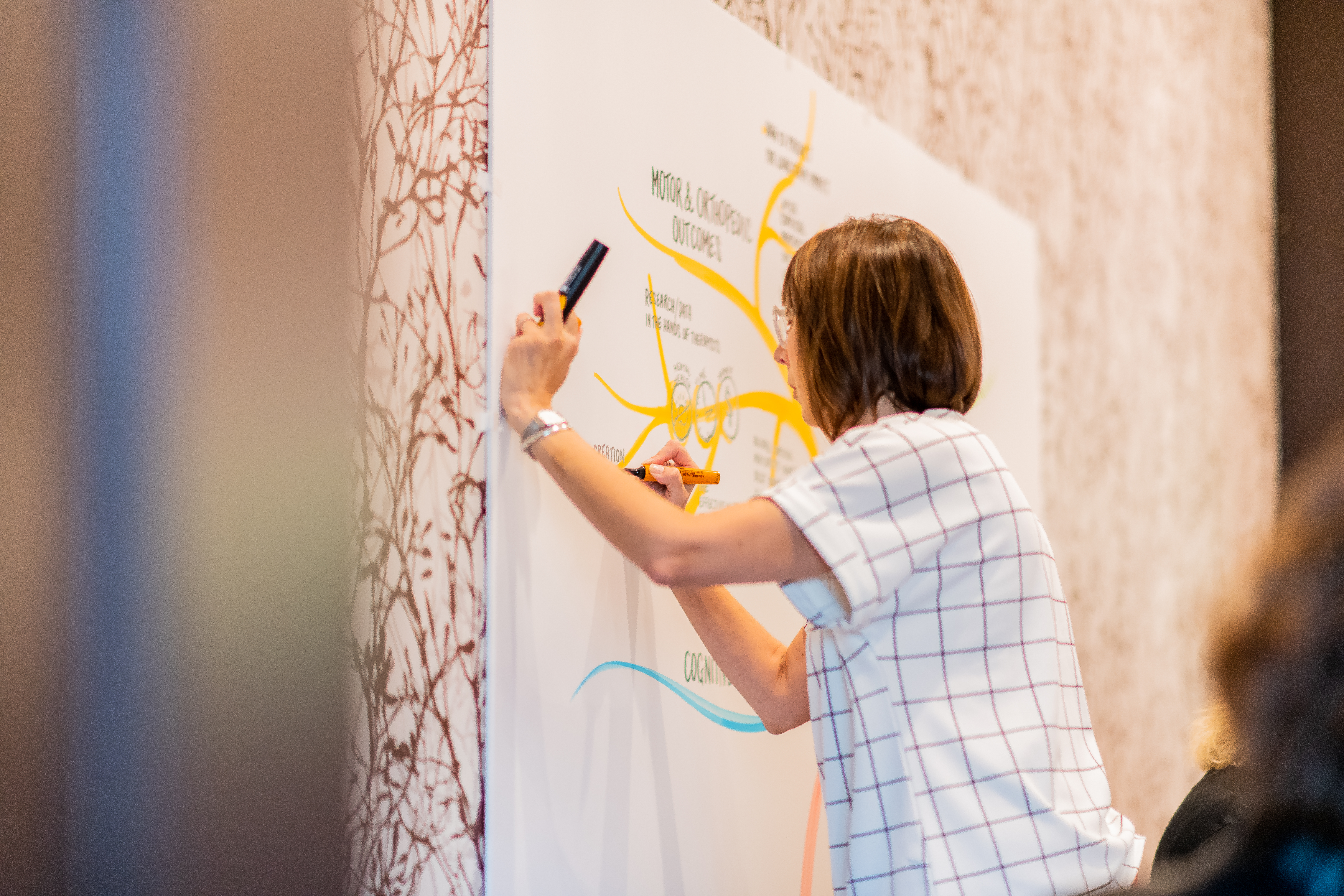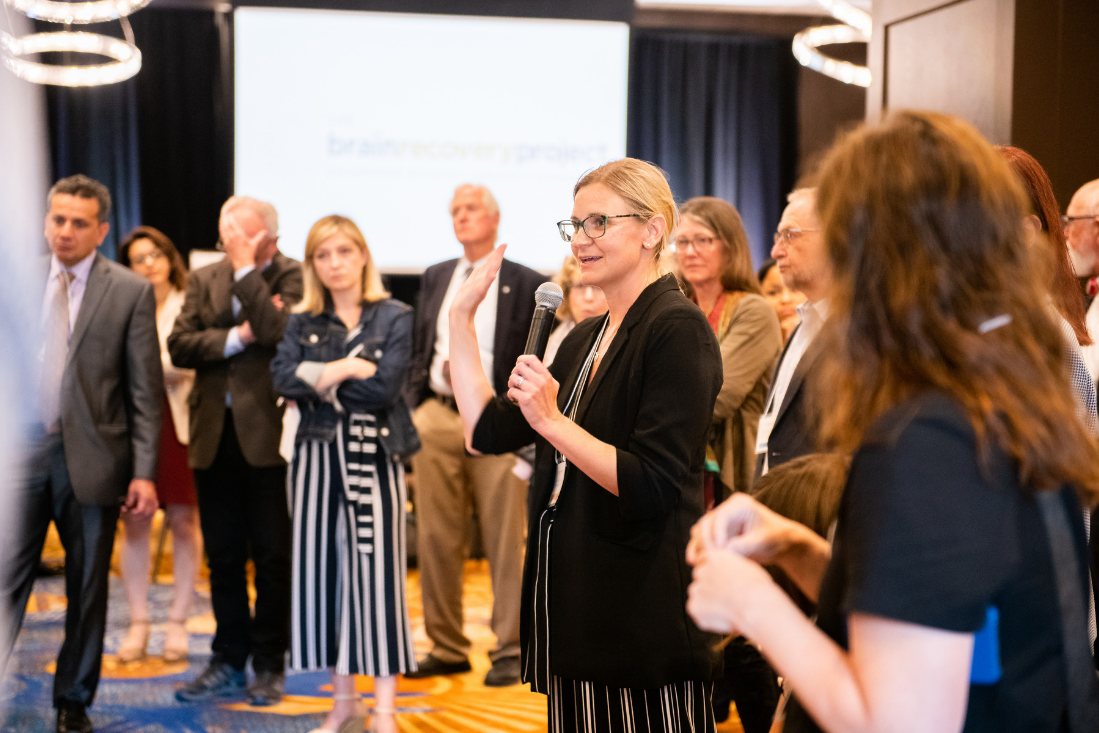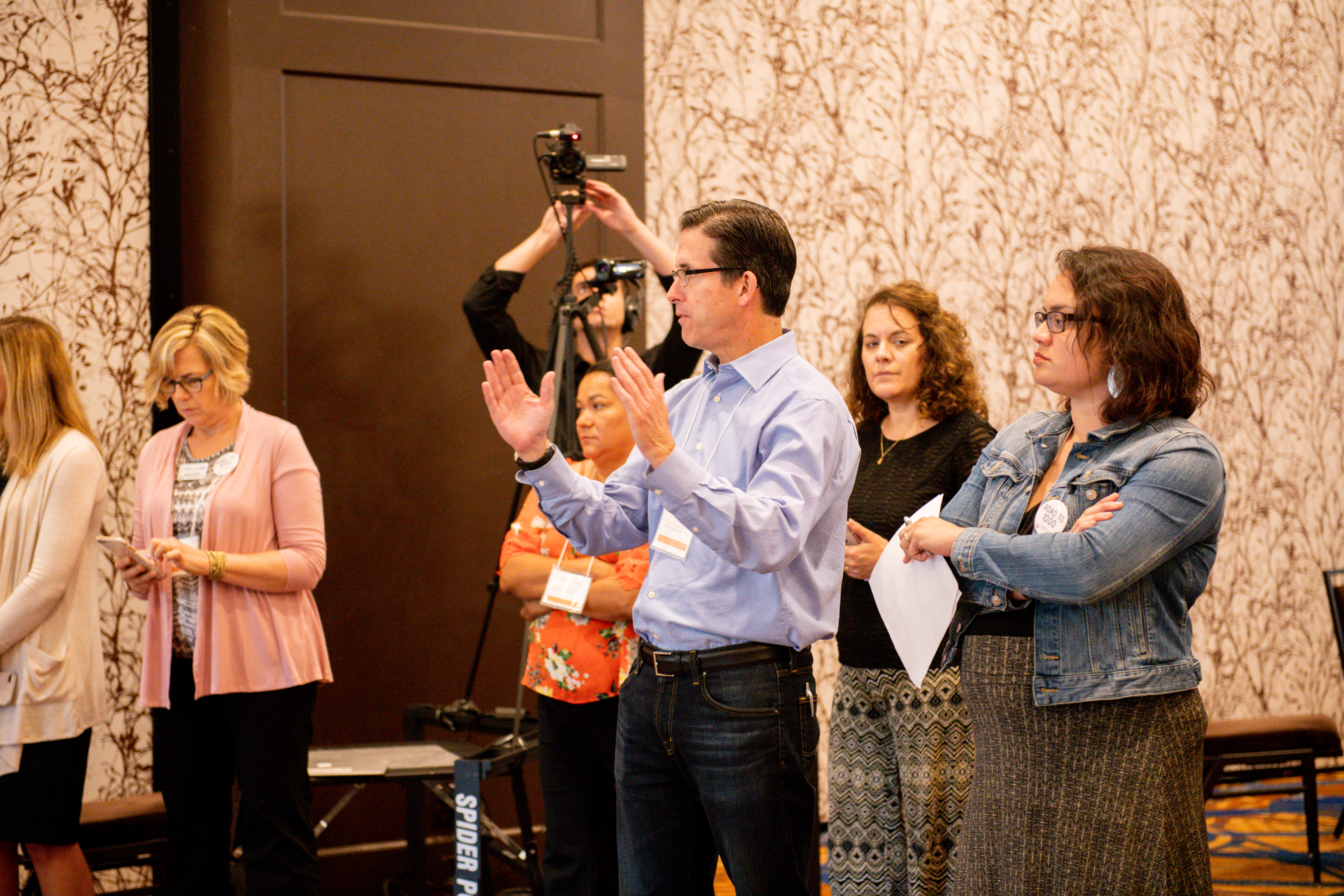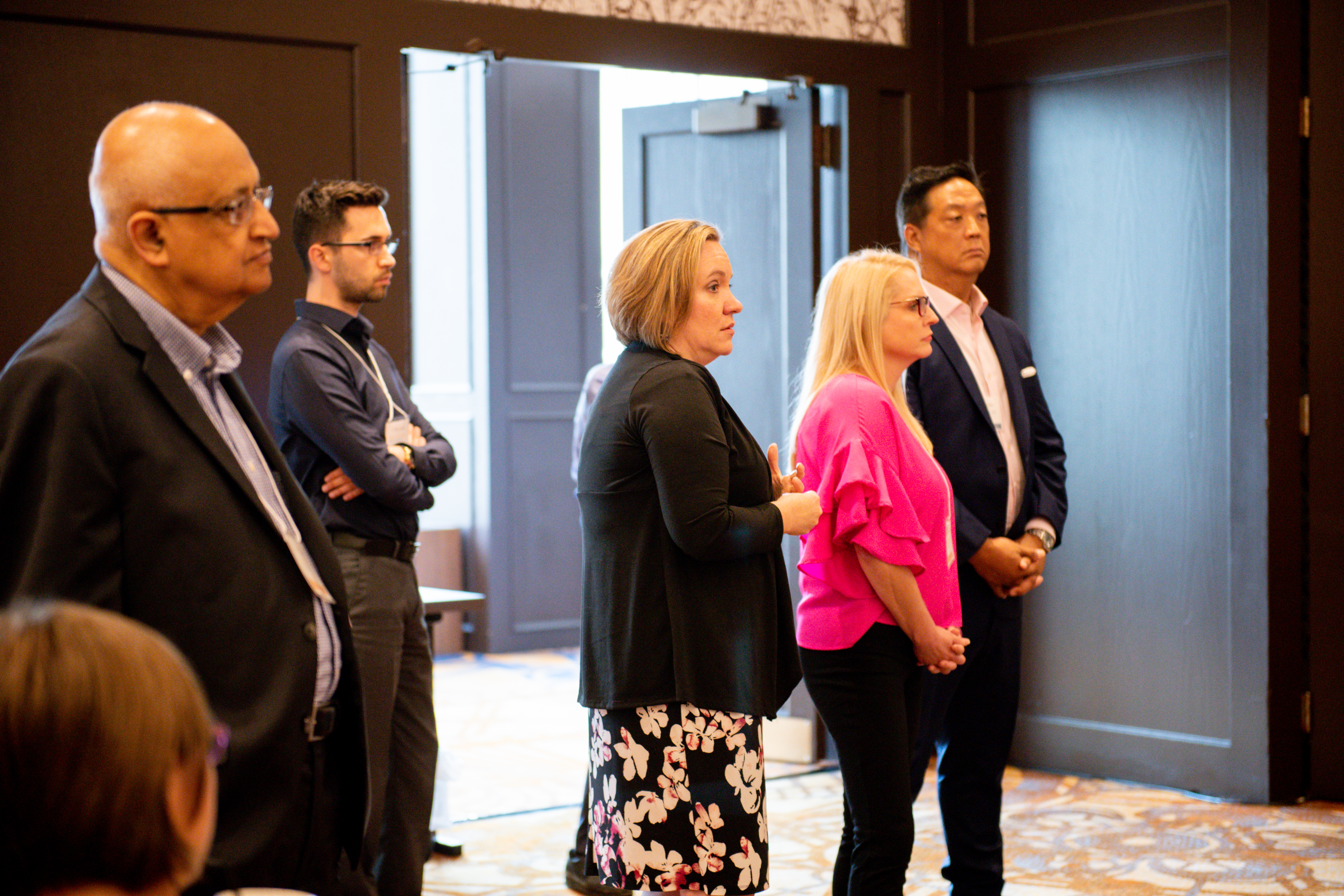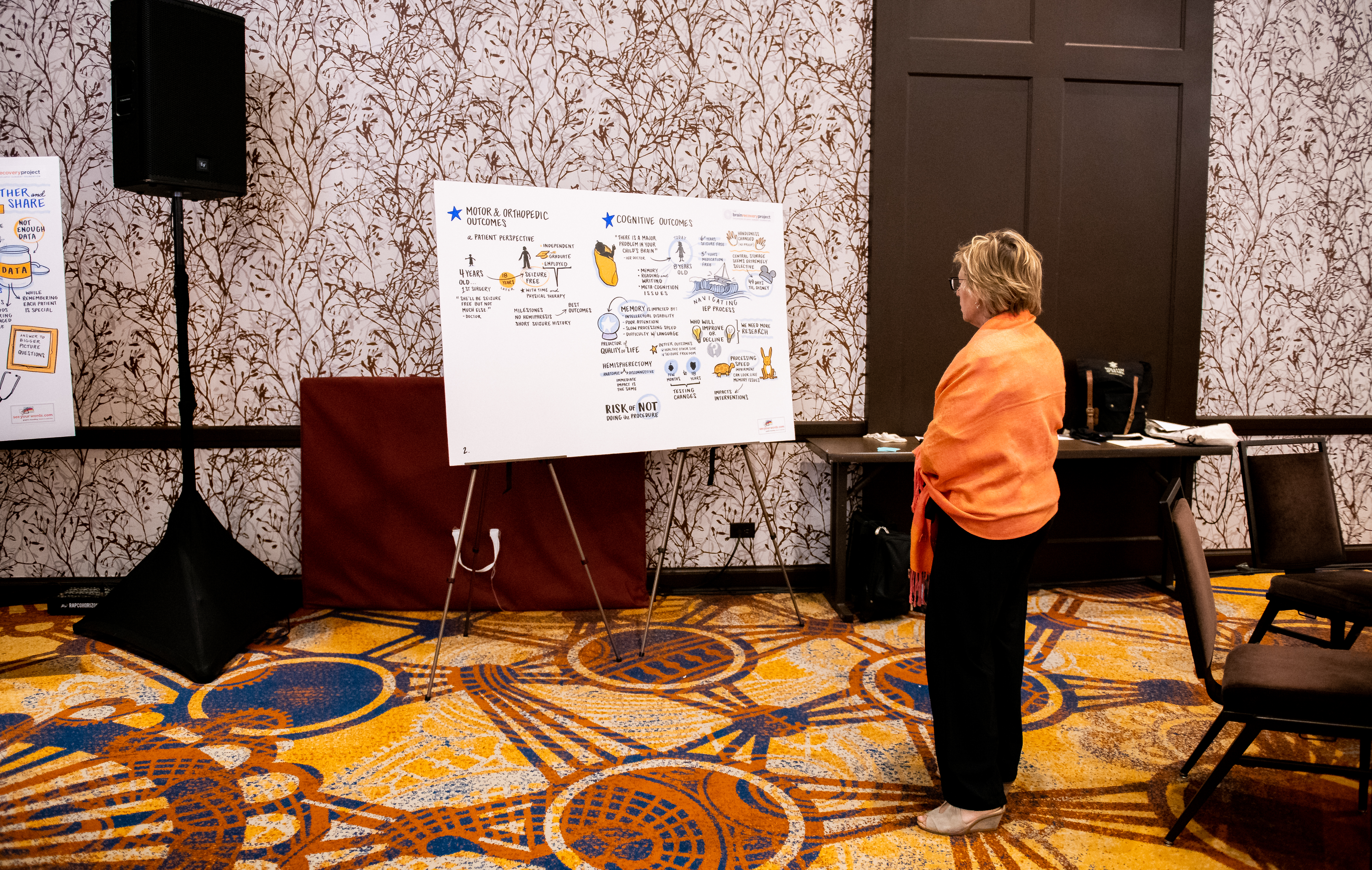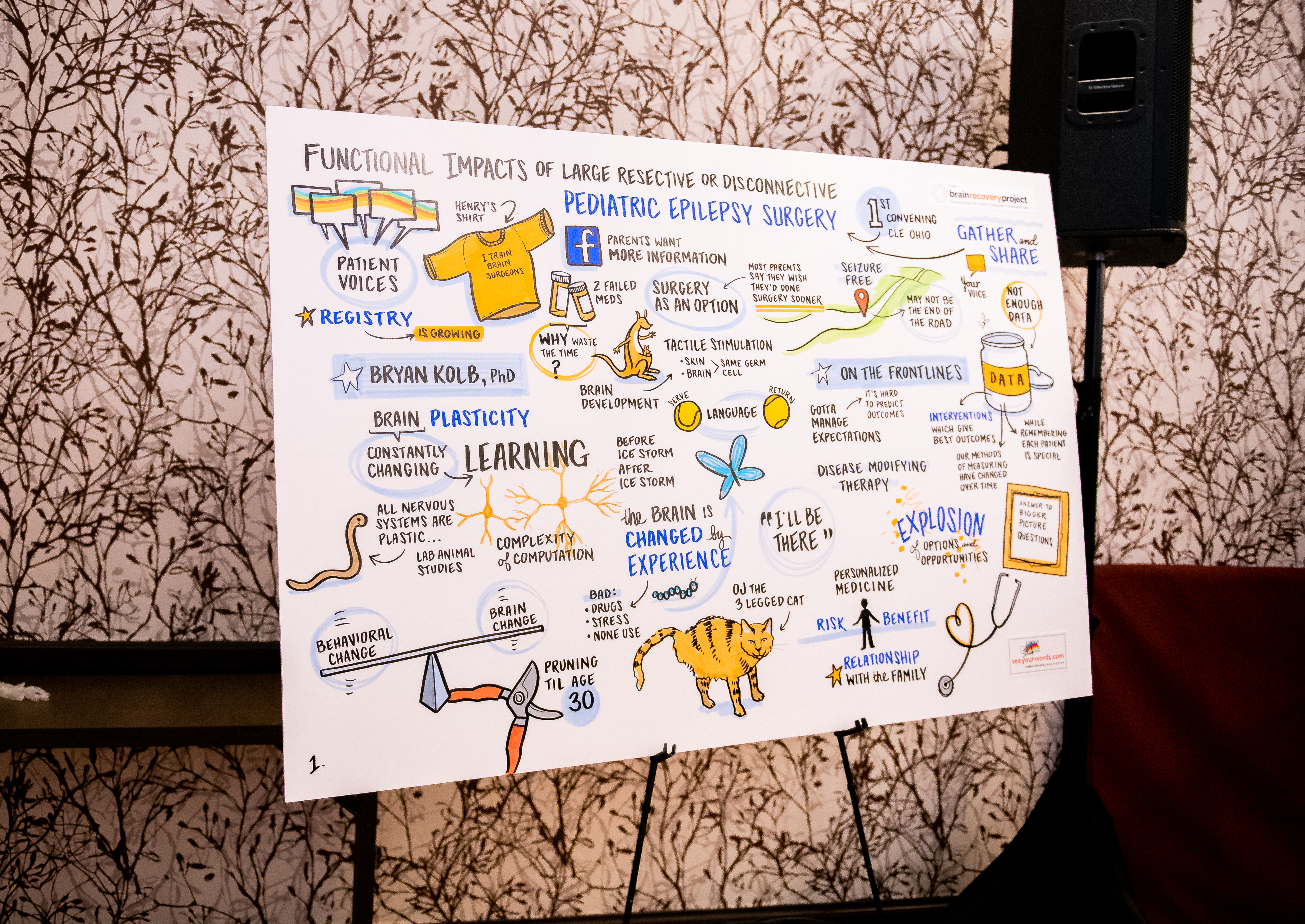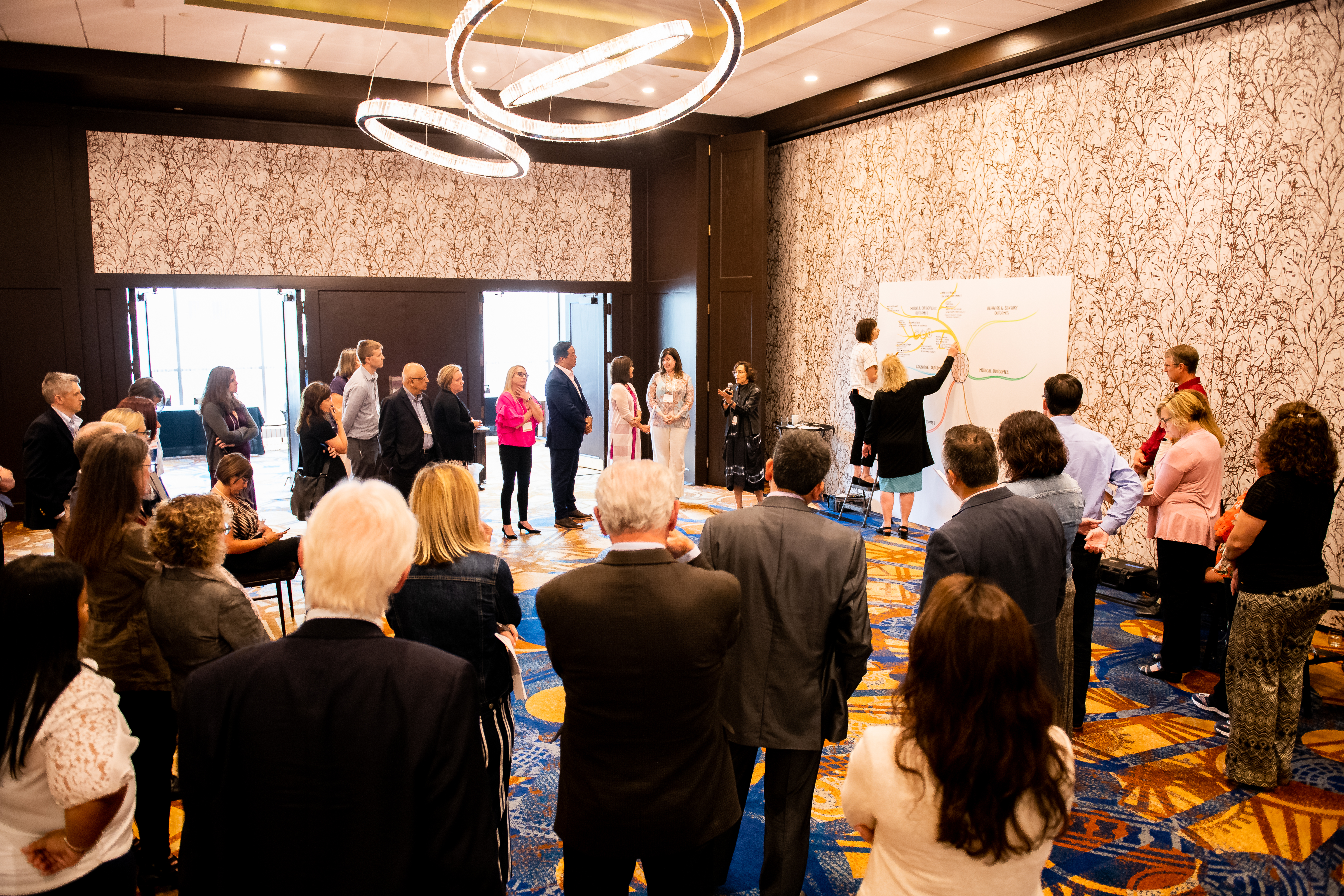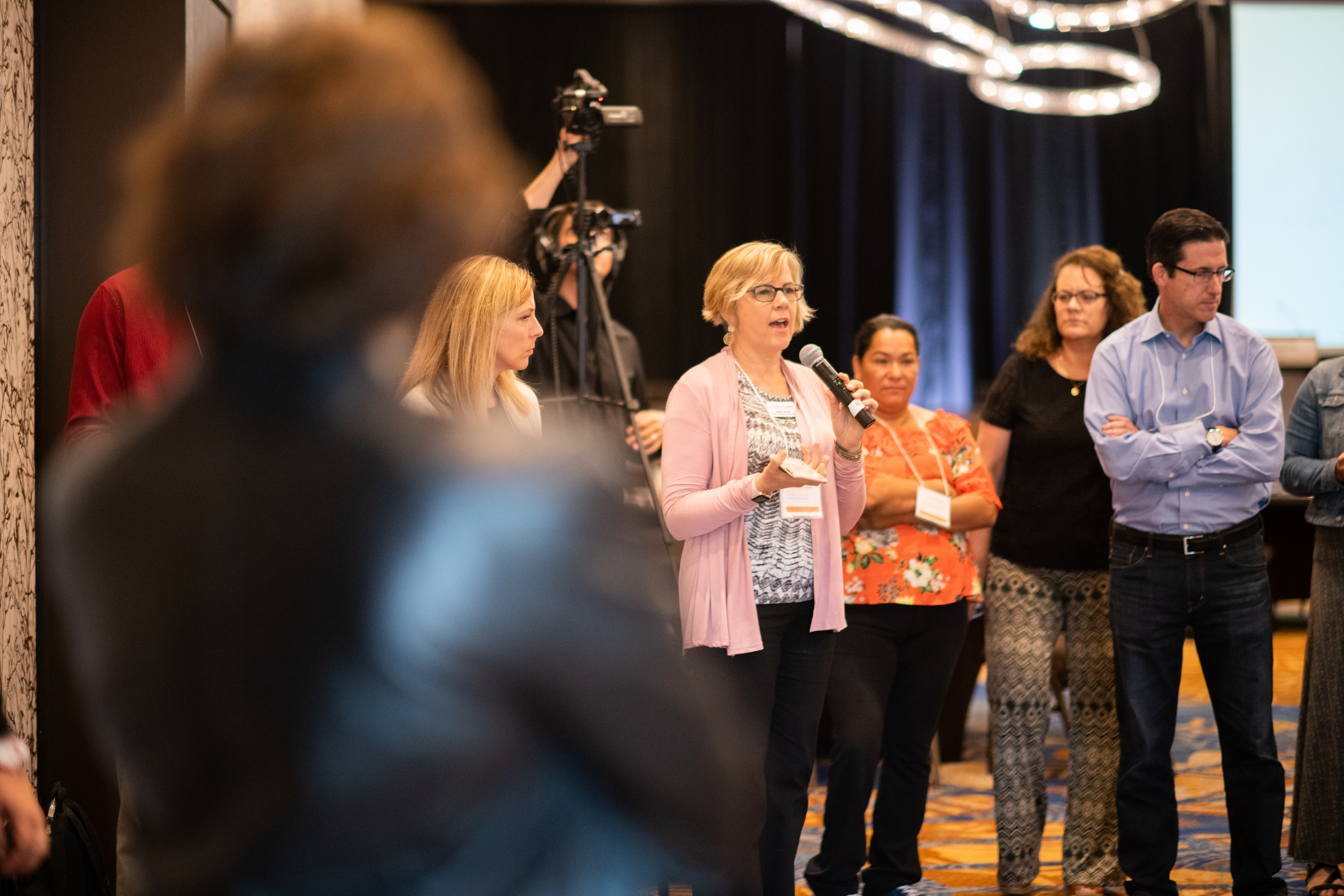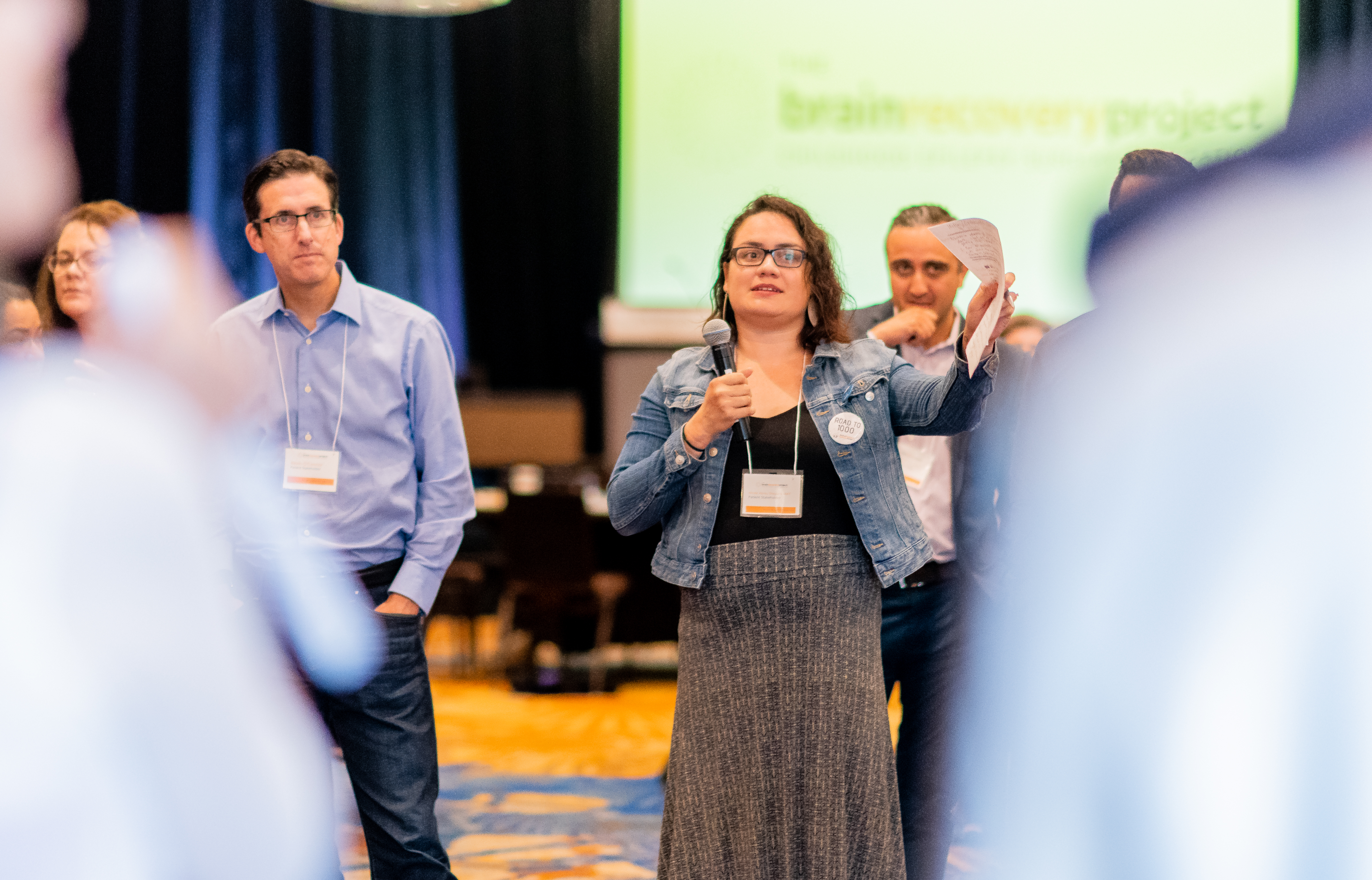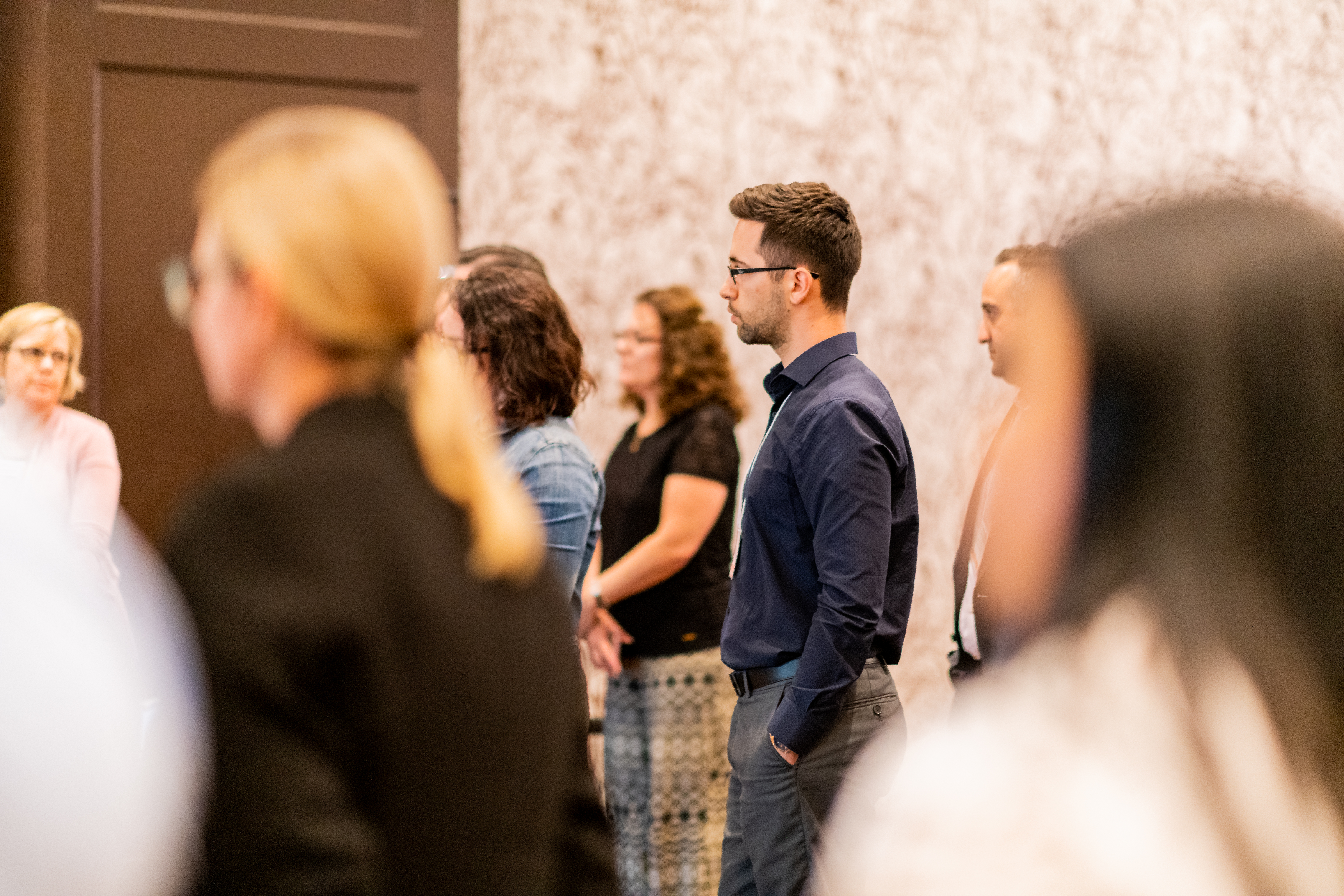The proceedings of this meeting were published in December of 2021. See Knowledge gaps for functional outcomes after multilobar resective and disconnective pediatric epilepsy surgery: Conference Proceedings of the Patient-Centered Stakeholder Meeting 2019
Parents deserve accurate, research-based information when deciding whether their child should have epilepsy surgery – especially large procedures like hemispherectomy, single or multiple lobectomies, large resections, and similar surgeries which disconnect large parts of the brain.
Just as it is important to understand the consequences of uncontrolled seizures, having a roadmap that guides parents through the potential impact of surgery on various functions of the body is critical — and not just for parents, but for doctors and therapists who treat these children after surgery and into adulthood.
That’s why on July 18, 2019, we held a meeting to understand what the scientific research says so far about the long-term benefits and challenges of large pediatric epilepsy surgeries in the areas of motor, orthopedic, sensory, behavioral, medical, and cognitive challenges across the lifespan.
Here’s how we defined large pediatric epilepsy surgeries for this meeting:
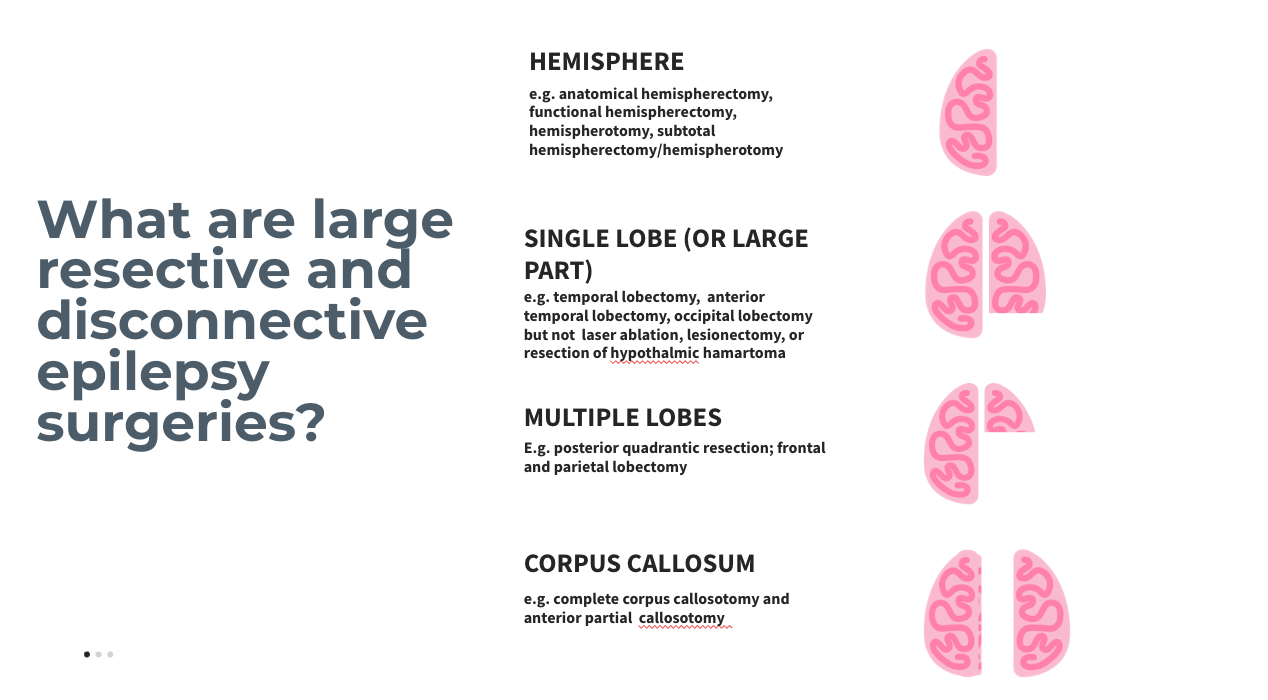
The meeting also helped us identify research gaps in these areas, and will help to answer questions parents often have:
- Expectations: Given my child’s epilepsy, cause of epilepsy, and our preferences, what should we expect to happen to our child after epilepsy surgery?
- Choices: Given my child’s epilepsy surgery options, what are the benefits and harms of those options?
Although brain surgery to stop seizures is being used more every year, there isn’t much scientific research to help parents and doctors understand the long-term benefits and challenges of surgery. This leads to anxiety, uncertainty, and a lack of evidence-based guidance for parents and clinicians who want to help children achieve their full potential after surgery.
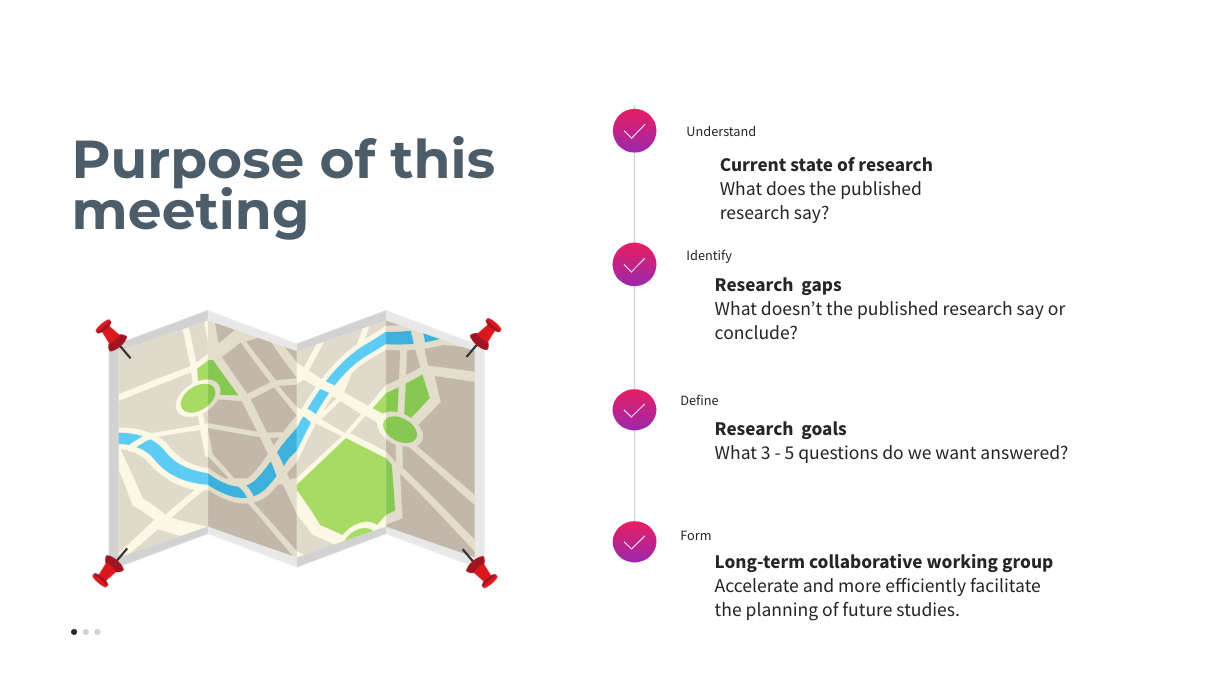
For the first time, parents, patients, doctors, and researchers discussed what to expect after surgery. Parents identified the topics for discussion, helped create the agenda, and were invited to share their personal experiences to an audience of researchers and doctors.
This has never been done before.
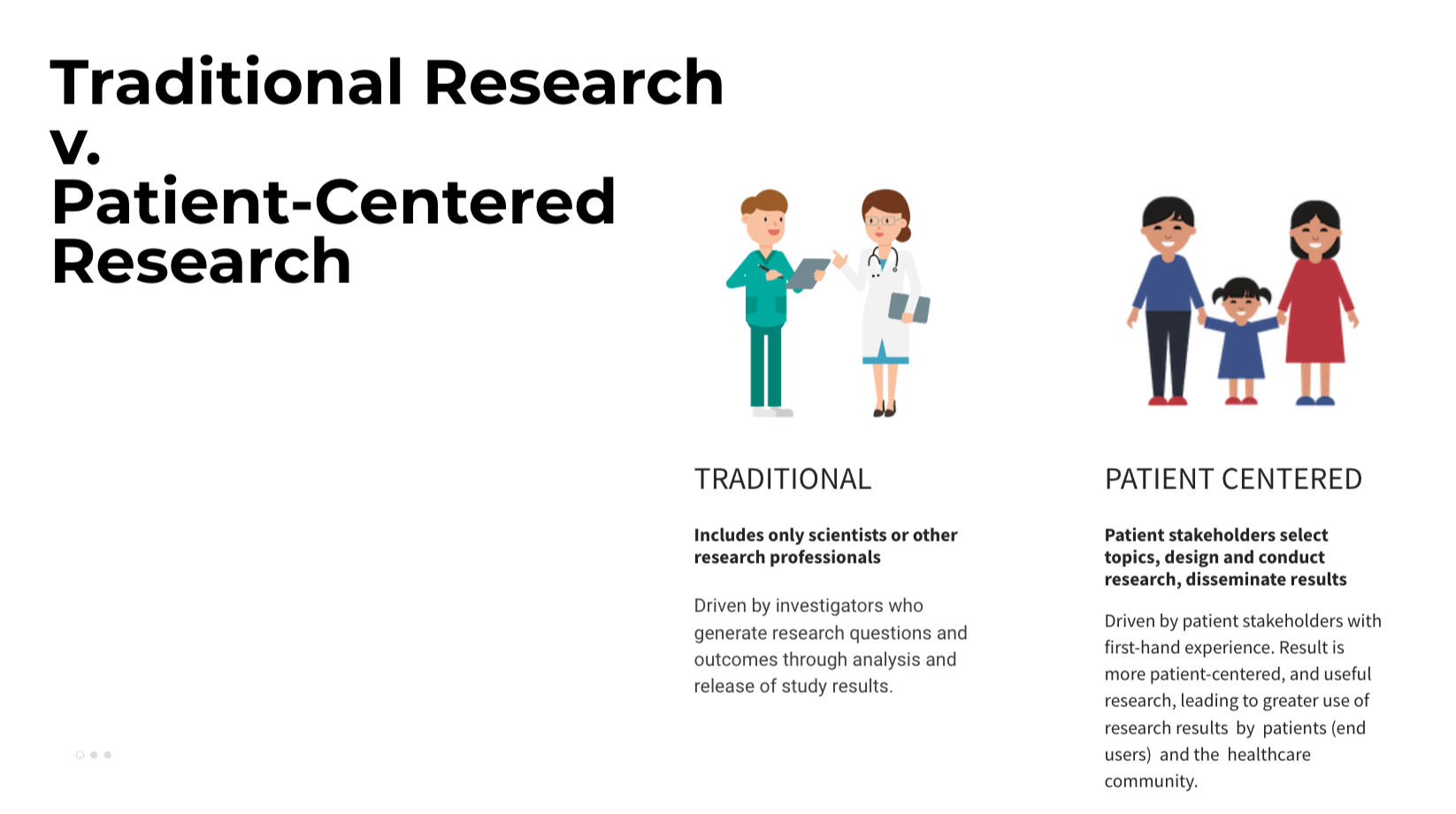
What happened at our meeting about functional impacts after large resective and disconnective epilepsy surgeries.
Listening to the patient voice
The meeting began with opening remarks and a brief presentation from Monika Jones, Project Lead. An overview of preliminary data results from the patient-powered Global Pediatric Epilepsy Surgery Registry, common themes discussed by The Brain Recovery Project’s community advisory council, as well as patient-reported trends and themes from various social media groups were presented.
Keynote Address
The opening keynote address was delivered by neuroscientist Bryan Kolb, PhD, who is the Board of Governors’ Research Chair in Neuroscience at the University of Lethbridge. Dr. Kolb’s research focuses on the organization and functions of the cerebral cortex. Dr. Kolb has contributed extensively to the literature of neuroplasticity during development and in response to experience, drugs, hormones and injury, including how these changes influence behavior. His 1980 textbook Fundamentals of Neuropsychology, co-authored with colleague Ian Whishaw, helped define the field of neuropsychology and as of 2015 is in its seventh edition.
On The Frontlines: The Clinicians’ Perspective
Following the opening keynote, a panel featuring six directors of level 4 pediatric epilepsy programs addressed questions about information available to them to help counsel and advise parents of functional outcomes and the insight they have into the long-term functional impacts of the surgery for their patients.
The clinicians expressed that good data exists around various surgeries’ effectiveness to control seizures, but minimal research is available around the functional impacts of surgery, or the potential interventions after surgery that could help a child reach an optimal outcome.
Several clinicians cautioned the stakeholders not to draw conclusions from existing research. Some research studies, for example, are poor quality because they show only the experience of a single epilepsy surgery facility.
“… do we have enough data in terms of functional outcomes? ….. The answer for me is no, we don’t have that. …. this is a challenge. This is the reason why we’re here.”
Other clinicians reminded us that epilepsy is a condition based on a symptom, not a cause; however, seizures can occur for many reasons. There are even variations in causes – brain malformations, for example, can be caused by different genetic conditions. These underlying variations can affect a child’s functional outcomes after surgery.
“You know, we still do not easily have control over [how] the rest of the brain is. And it’s not the same patient to patient.”
Parent stakeholders were reminded that managing expectations is critically important, and that some neurologists are not good at doing this.
“I … met with a dad who said, ‘I read on the internet, that this is the best thing for my child’s cognitive outcome.’ And he had the expectation that his child was going to be normal after the surgery … I explained to him that your child’s going to lose half their visual field. And talking to me was the first time he had heard that – even though he had met three neurologists before meeting with me.”
When asked about the toughest questions parents asked when considering large epilepsy surgeries for their child, several clinicians shared that speech after surgery was a difficult question to answer in some cases.
“… whether [the child will] develop [speech] if we did surgery or didn’t do surgery is not necessarily very clear …”
One thing that was clear was that stopping seizures as much and as early as possible gives the child the best chance and having better functional outcomes, especially if seizures begin in infancy or early childhood, and can affect speech and cognitive outcomes later in childhood.
“…what we know, though is if you can effectively control the epilepsy [then] …we can maximize whatever their potential is.”
Image (from left to right): Dr. Howard Weiner, Chief of Neurosurgery, Texas Children’s Hospital; Dr. Taylor Abel, Surgical Director, Pediatric Epilepsy Surgery Program UPMC Pittsburgh Children’s Hospital; Dr. Aria Fallah, Co-Director, Pediatric Epilepsy Surgery Program, Mattel Children’s Hospital, University of California, Los Angeles; Dr. Raman Sankar, Chief, Pediatric Neurology, Mattel Children’s Hospital at the University of California, Los Angeles; Dr. Scott Perry, Medical Director, Neurology, Cook Children’s Hospital; Dr. Ahsan Moosa Naduvil Valappil, Neurologist, Cleveland Clinic.
For the rest of the day, the group learned about and discussed the existing research and gaps related to each of the six functional areas:
- motor and orthopedic
- cognitive
- education
- behavior and sensory
- medical
- speech and language.
For each area, the patient perspective was shared first. Then, researchers in each area made their presentations.
The researchers had a tough job – summarize what the research says in about 15 minutes and using “plain English” so that non-medical persons could understand their presentations.
After each area was discussed, the stakeholders would break out into small groups where they discussed the presentations and prioritized future research.
While the presenters talked, a professional graphic recorder, Johnine Byrne of See Your Words, captured the key points in her drawings.

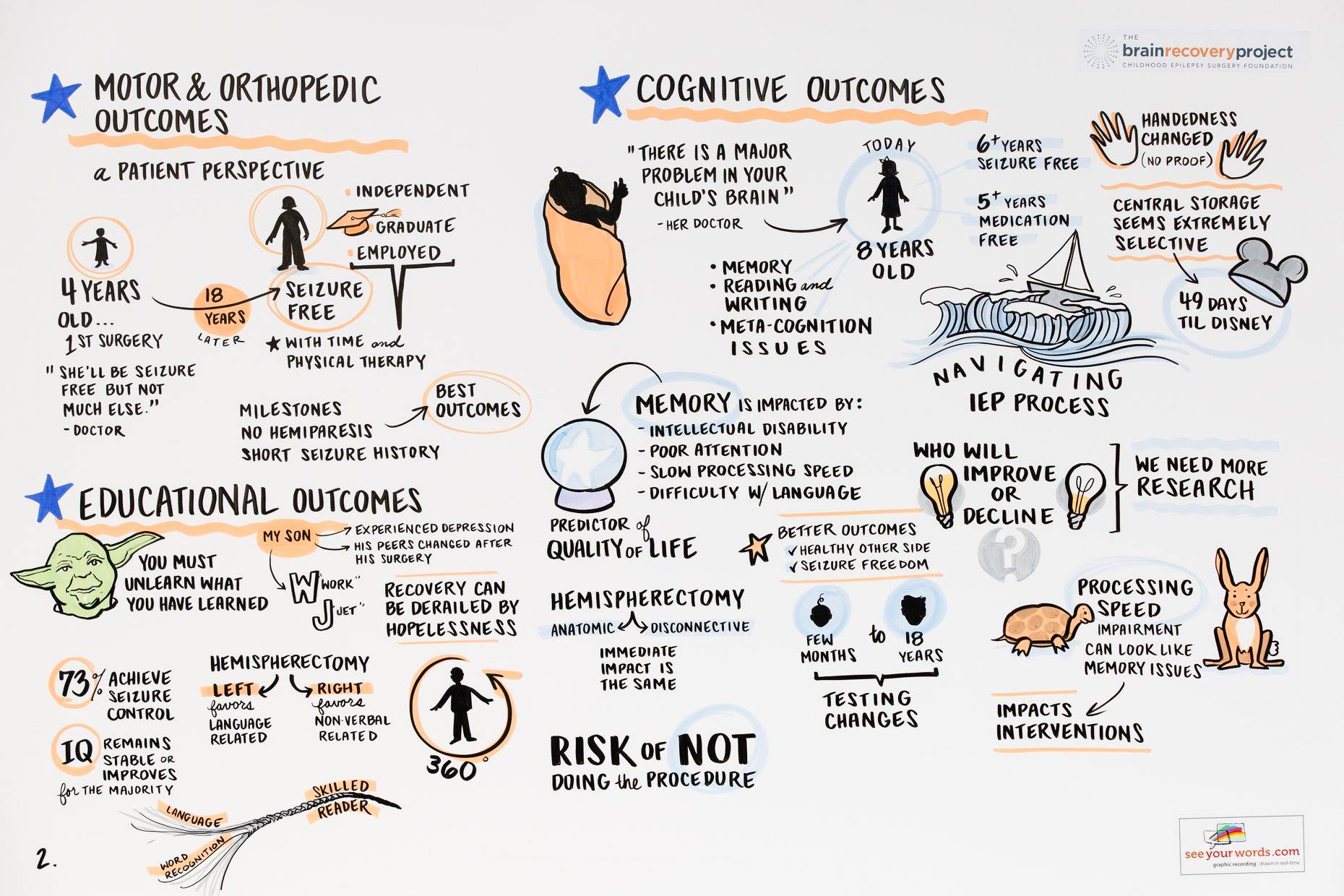
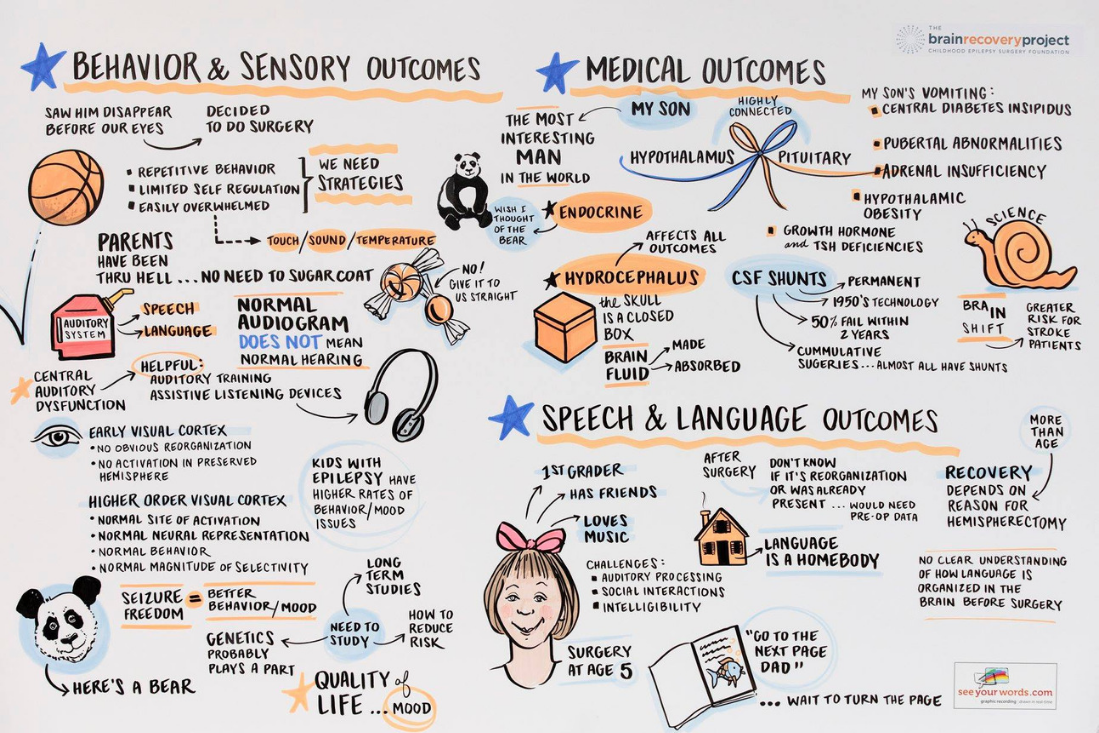
MOTOR AND ORTHOPEDIC OUTCOMES
Patient Perspective • Abby Lampley
Abby Lampley, an adult patient stakeholder, discusses motor and orthopedic challenges after childhood hemispherectomy surgery.
Motor and Orthopedic Outcomes • Dr. Raymund Woo
Dr. Raymund Woo, Medical Director, Pediatric Orthopedic Program at AdventHealth Medical Group Pediatric Orthopedic Surgery at Orlando and member of the Scientific Advisory Board member for The Brain Recovery Project: Childhood Epilepsy Surgery Foundation, discusses the current state of research on motor and orthopedic outcomes after large resective/disconnective epilepsy surgeries, especially hemispherectomy.
COGNITIVE OUTCOMES
Patient Perspective • Ken Lininger
Ken Lininger, patient stakeholder, discusses his daughter’s cognitive outcomes after posterior quadrantic resection (also known as temporo-parietal-occipital disconnect/resection).
Memory • Mary Lou Smith, PhD
Mary Lou Smith, PhD, Professor of Psychology at the University of Toronto, clinical neuropsychologist at Sick Kids Hospital in Toronto, Canada, and member of the neuropsychology task force of the International League Against Epilepsy, discusses the state of research on memory after large resective/disconnective pediatric epilepsy surgery. Dr. Smith has devoted most of her professional career to understanding memory and cognitive impairments in children after epilepsy surgery.
Cognition • Ahsan Moosa Naduvil Valappil, MD
Dr. Ahsan Valappil, neurologist with the Cleveland Clinic, discusses cognition after large resective/disconnective epilepsy surgeries.
Higher Cognitive Function In Adults Who Had Hemispherectomy Surgery In Childhood • Lynn Paul, PhD
Lynn Paul, PhD, Senior Research Scientist and Director of the CalTech Psychological Assessment for Research Lab at the California Institute of Technology discusses early data in a study, funded by The Brain Recovery Project, which aims to understand higher cognitive function in adults who had hemispherectomy surgery in childhood.
EDUCATIONAL OUTCOMES
Patient Perspective • Michelle Mottern, RN, NP
Michelle Mottern, patient/parent stakeholder, discusses her son’s educational challenges after left hemispherectomy.
Academic Achievement and IQ • Kladji Puka, PhD candidate
Kladji Puka, PhD candidate in the Department of Epidemiology & Biostatistics at the The Schulich School of Medicine and Dentistry at Western University discusses current research on academic achievement and intellectual quotient (IQ) after large epilepsy surgeries in childhood.
Acquisition of Literacy • Joanna Christodolou, EdD
Joanna Christodolou, EdD, Director of the Brain, Education and Mind Laboratory at MGH Institute of Health Professions, Adjunct Lecturer on Education at Harvard University and Research Affiliate at Gabrieli Laboratory at the Massachusetts Institute of Technology discusses reading after hemispherectomy.
BEHAVIOR AND SENSORY OUTCOMES
Patient Perspective • Cecile Dame, PhD
Cecile Dame, PhD, discusses her son’s behavioral and sensory challenges after her son’s left hemispherectomy.
Hearing and Auditory Processing • Frank Musiek, PhD, CCC-A
Frank Musiek, PhD, CCC-A, Director of the NeuroAudiology Lab at the University of Arizona, discusses hearing and auditory processing after large resective/disconnective pediatric epilepsy surgery.
Vision and Visual Processing • Marlene Behrmann, PhD
Marlene Behrmann, PhD, Director of the Behrmann Laboratory at Carnegie Mellon University and member of the National Academy of Sciences, discusses vision and visual processing after large resective/disconnective pediatric epilepsy surgery.
Behavioral and Mental Health • Cynthia Salorio, PhD, ABPP
Cynthia Salorio, PhD, ABPP, Director of Rehabilitation Outcomes and Related Research at Kennedy Krieger Institute and Associate Professor of Physical Medicine and Rehabilitation at Johns Hopkins University School of Medicine, discusses behavioral and mental health issues after large disconnective/resective pediatric epilepsy surgery.
MEDICAL OUTCOMES
Patient Perspective • Monika Jones, JD
Monika Jones, Project Lead, discusses her son’s significant challenges with hydrocephalus and endocrine issues after functional hemispherectomy and subsequent revisions to complete an anatomical hemispherectomy.
Endocrine Challenges • Phillip Zeitler, MD
Dr. Phillip Zeitler is Section Head, Endocrinology and Medical Director of Children’s Hospital Colorado Clinical & Translational Research Center. He is also a member of The Brain Recovery Project’s Scientific Advisory Board. Here he discusses the state of research on endocrine challenges after large resective/disconnective pediatric epilepsy surgery.
Hydrocephalus • Aria Fallah, MD
Dr. Aria Fallah, MSc, FRCSC, Co-Director, Pediatric Epilepsy Surgery Program at Mattel Children’s Hospital at the University of California, Los Angeles, Assistant Professor, Department of Neurological Surgery, Pediatrics, at the David Geffen School of Medicine, discusses hydrocephalus after large resective/disconnective pediatric epilepsy surgery.
SPEECH AND LANGUAGE OUTCOMES
Patient Perspective • Luke Shepard
Luke Shepard, Board Chair of The Brain Recovery Project, shares his daughter’s journey with speech and language after left hemispherectomy.
Speech and Language • Patricia Walshaw, PhD
Patricia Walshaw, PhD, Director of the Neurobehavioral Epilepsy Program at the Semel Institute for Neuroscience and Human Behavior at the University of California at Los Angeles presents the current state of research on speech and language outcomes after large resective and disconnective pediatric epilepsy surgeries.
After each topic area was discussed, the stakeholders gathered at the “mind map” – a large drawing of the brain and six branches extending from it – each branch representing a functional outcome area.
Johnine Byrne begins capturing the group’s research goals on the mind map
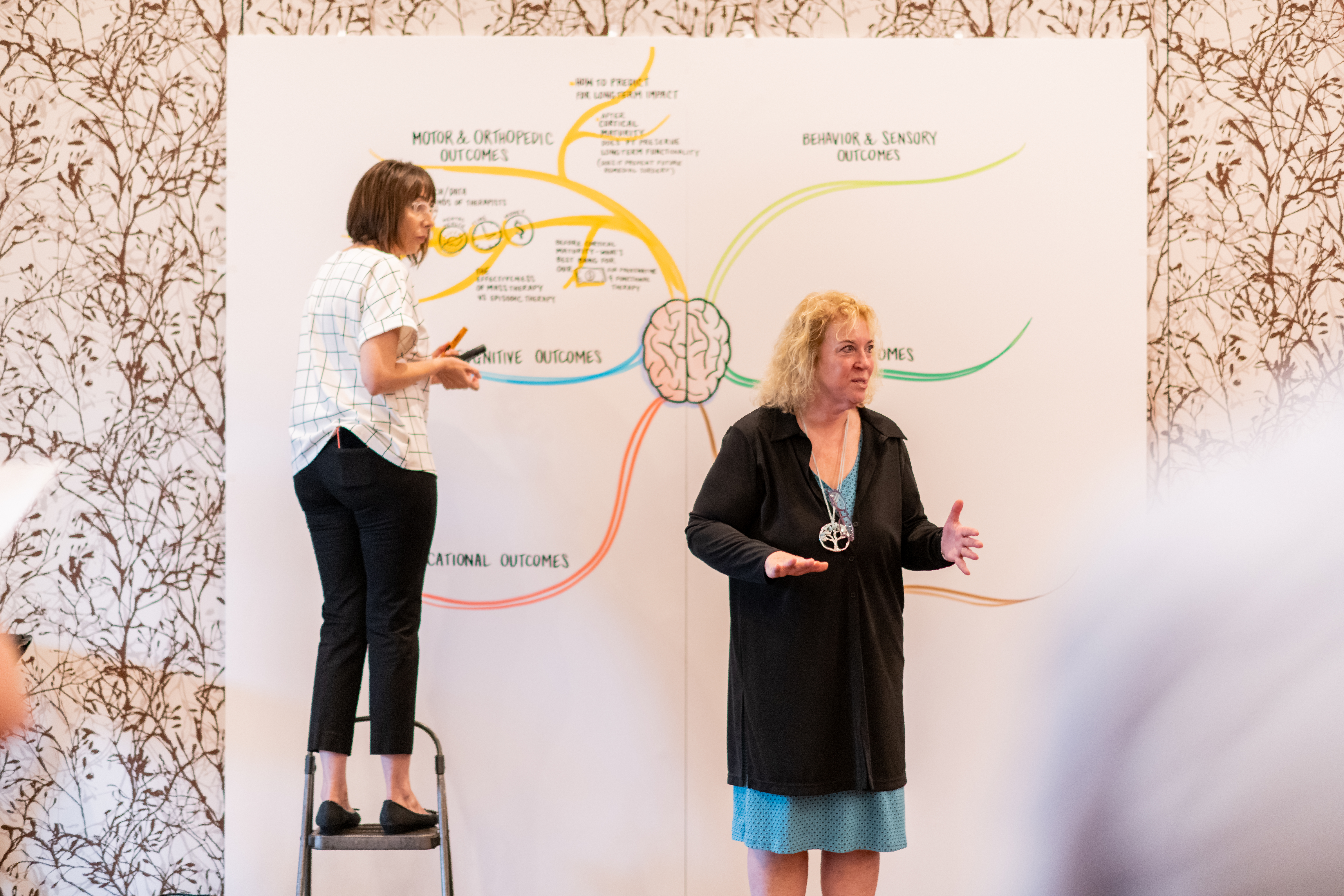
Leslie Yerkes (right) facilitates the idea exchange between the stakeholders while Johnine Byrne records with graphics.
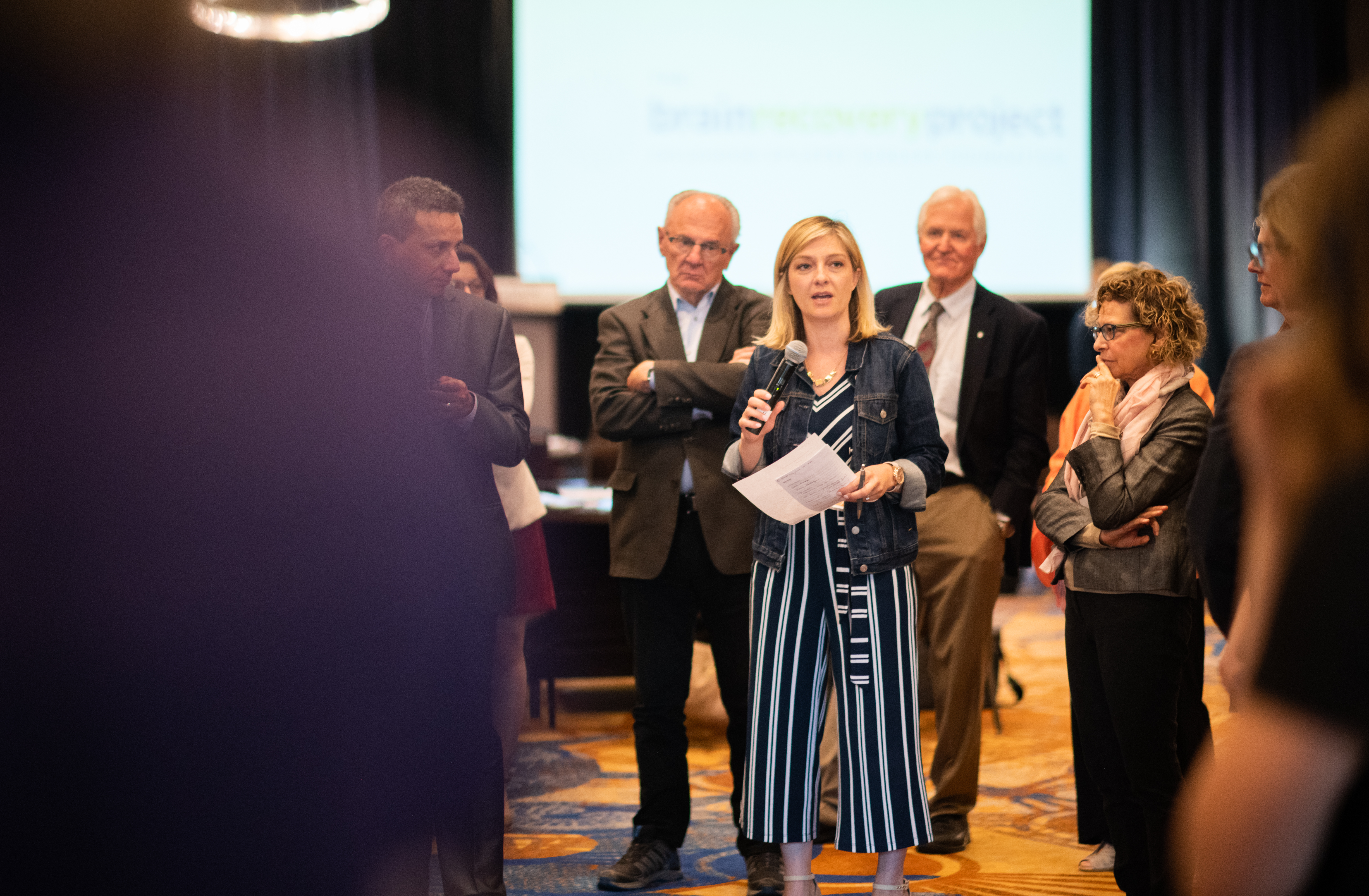
Stakeholder parent Maia Banks (foreground) shares her breakout table’s research priorities. (Background, left to right: Dr. Ahsan Valappil, Dr. Warren Brown, Dr. Bryan Kolb, Dr. Terry Schwartz)
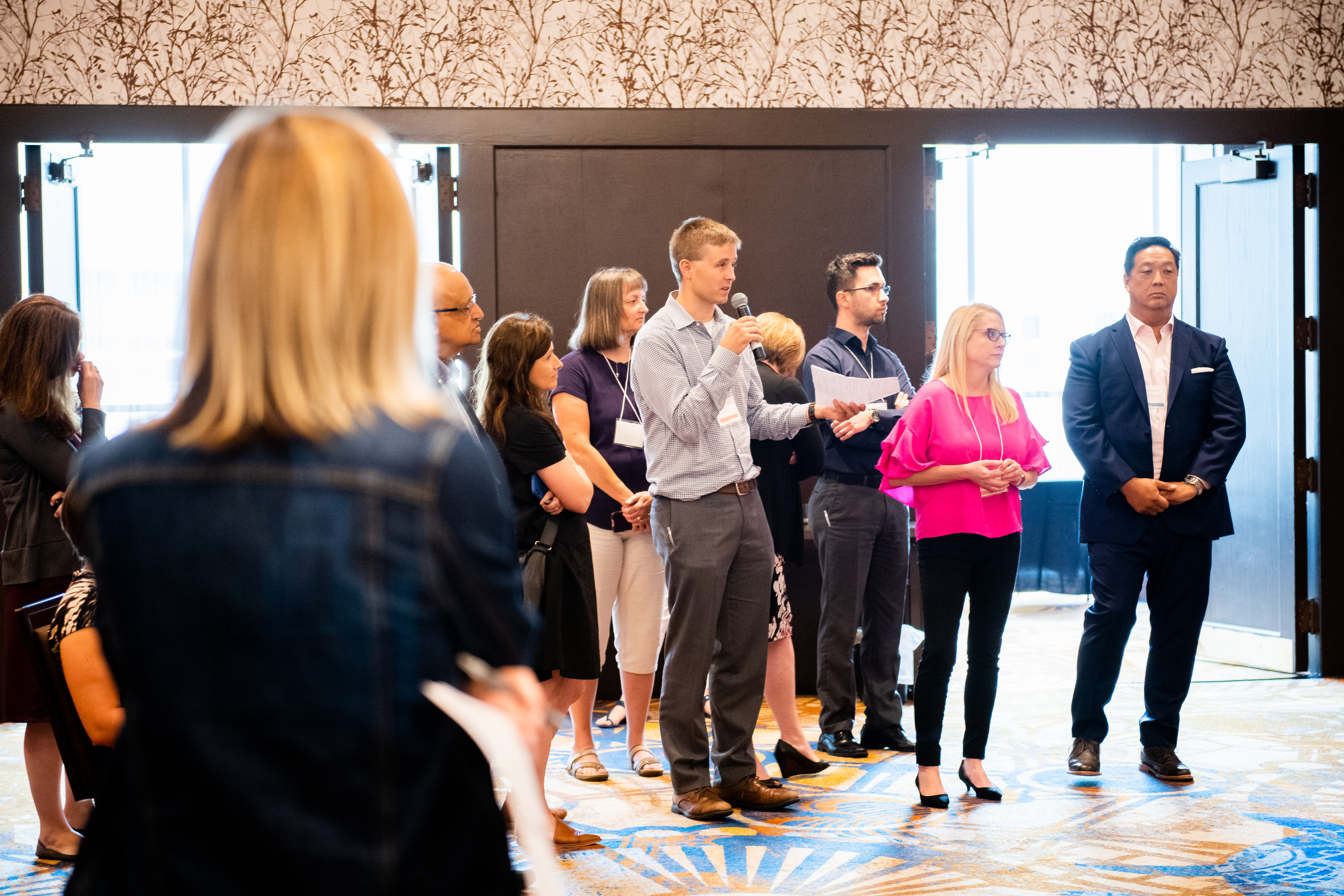
Stakeholder parent Luke Shepard (foreground) shares his table’s research priorities. (Background, left to right: Dr. Raman Sankar, Dr. Cynthia Menard, Roxanne Cogil, Michelle Mottern, Kladji Puka, PhD(c), Dr. Raymund Woo)
At the end of the day, each person was allotted adhesive dots which they used to vote by placing their dots next to research priorities they felt were most important.
The final mind map showed the group’s decision on future research priorities:
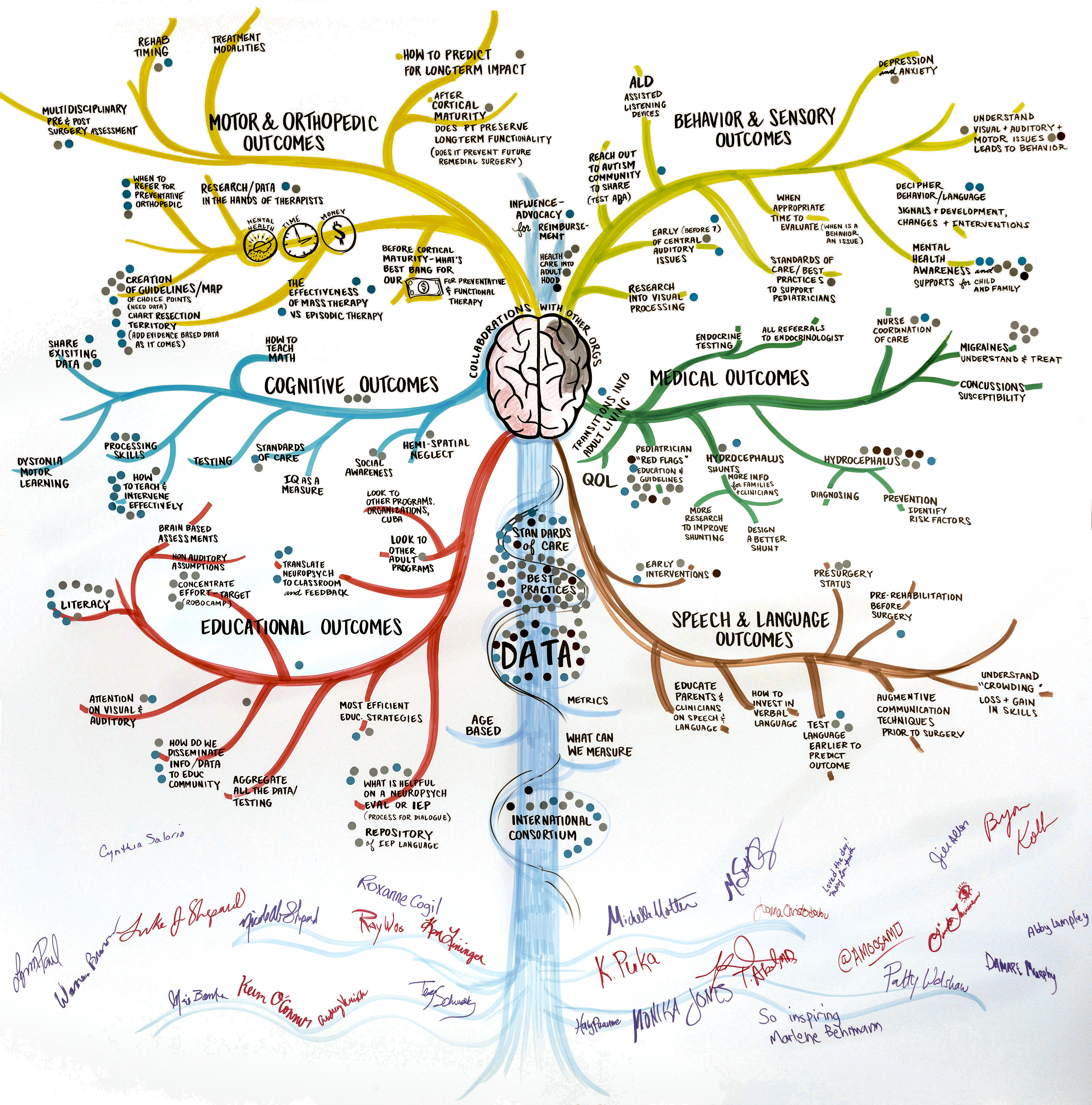
What We Decided
The group agreed that there are huge research gaps in all areas discussed. In some areas there wasn’t even a basic understanding of how large pediatric epilepsy surgeries may impact that functional area.
For example, we don’t fully understand the potential long-term impacts on a child’s endocrine system — research there is totally absent.
As a result, we decided that the most impactful first step for the families we serve would be to establish and publish a “Best Practices” framework which would provide parents and clinicians with a roadmap based on what we know so far.
Another important outcome of the meeting was that the doctors gained a better understanding of how the surgeries can impact a child as they grow up. It was powerful for them to hear firsthand from parents and adults who had surgery in childhood about the long-term challenges they face.
One surgeon had this to share:
“The main upshot of this conference for me was that there is a lot of focus on the acute care of children with catastrophic hemispheric epilepsy, but the long-term comorbidities and drivers of quality of life have received far less attention. Surgeons and neurologists need to play a long-term role in the care of these patients and quarterback the management of long-term surgical and medical comorbidities. This meeting was extremely powerful for me. Actually, we immediately changed some of our practices at our children’s hospital as a result of this meeting – including preoperative physiatry consults, which were not already part of our program. Also, we’ve begun a retrospective cohort study of our own hemispherotomy patients to investigate their long-term comorbidities.”
Another key outcome was the formation of a research consortium. After the meeting, several clinicians and researchers committed to driving the “Best Practices” framework forward by sharing it at professional meetings and scientific conferences.
We are working on next steps with this consortium, which includes drafting, publishing, and distributing the best practices guide for each clinical area after surgery, preparing slides and presentations for them to share at their scientific conferences, and initiating new research to start to fill in those research gaps.
Our deepest gratitude to everyone who made this conference possible

The full agenda, including a full list of participants and their roles, can be found here: Agenda
Our apologies to Dr. Terry Schwartz, clinician stakeholder, whose name was inadvertently omitted from the agenda.
We thank the American Epilepsy Society for the $6,500 Workshop Grant in support of this conference and Dixi Medical for sponsoring dinner for our participants.

Thank you for inviting me to be part of this. I am not sure if it could have been any better
Kudos to the team.
Really great meeting. I learned a ton and humbled (and inspired) by my experience.
Great meeting – it was so helpful to have all interested parties around the table. I also found it very helpful to learn about outcomes that fall outside my area of expertise.
This was an amazing meeting and I hope I can continue to be involved in the future. Strength in numbers – it is going to take a network/team.
Terrific meeting as it exposed the absence of information we have regarding the long term outcomes and interventions following big resective surgery in children.
Very informative and useful meeting to have all types of stakeholders present.
This meeting was truly exceptional! The structure was excellent for engaging all participants and the selection of participants was great. This is my new benchmark for excellence in family-clinician collaboration.
It was an excellent meeting and the illustrations were very helpful to see the priorities. The conference was well planned and executed with much collaboration among key stakeholders, researchers and patients.
This convening was an incredible opportunity and I’m newly collaborating with colleagues I met there on hemispherectomy research as a direct consequence.
This is how our community is getting stronger. I wish we could “advertise” to other major surgery centers to get more neurosurgeons and neurologists on board with the holistic approach that, I hope, will come out of this work.
Congratulations on such a successful event in bringing different stakeholders together. Looking forward to the great work developed as a group and the collaborations engendered by this meeting.
Great job. Your team should be so proud. I think outlining what best care looks like for your pt population is a very solid next step.
Great meeting – well organized and very informative. Looking forward to next steps.
This was a great event and I feel blessed to be a tiny part of it. Looking forward to helping the BRP move forward with this campaign.
 SUBSCRIBE TO OUR MAILING LIST
SUBSCRIBE TO OUR MAILING LIST
